Physical Address
304 North Cardinal St.
Dorchester Center, MA 02124
A complete tear of the ulnar collateral ligament (UCL) of the metacarpophalangeal (MCP) joint of the thumb necessitates this procedure.
An avulsion fracture at the attachment site of the UCL with displacement greater than 5 mm may also require repair/reconstruction.
Acute injuries are best treated with repair; chronic injuries (more than 3–6 weeks old) will likely require reconstruction.
Studies on the long-term outcome of ligamentous repair, rather than reconstruction, for chronic UCL injuries demonstrate durable outcomes; however, the majority of patients eventually develop osteoarthritis.
Other techniques for UCL repair, such as those using an internal brace and the Bio-Tenodesis Screw System, are also options for surgical reconstruction.
If significant metacarpophalangeal (MCP) arthrosis or arthritis is present, MCP joint fusion should be done because ligament reconstruction is not a durable option and will not provide pain relief .
Acutely injured patients typically have tenderness and swelling on the ulnar side of the MCP joint ( Fig. 17.1 ).
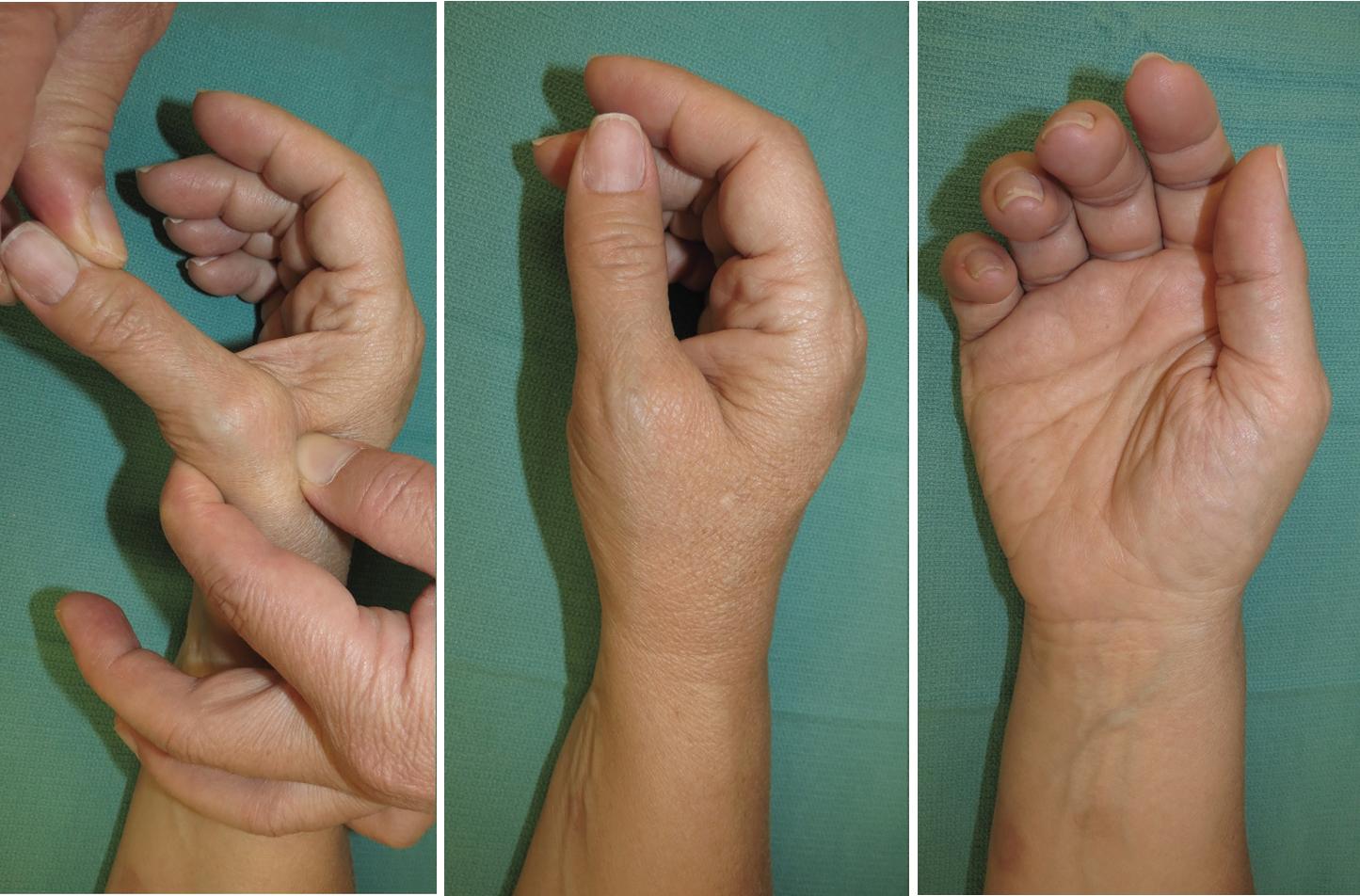
The integrity of the UCL is tested by applying valgus (radially directed) stress to the MCP joint and comparing the injured thumb to the uninjured contralateral thumb. The degree of laxity is measured, and the endpoint of the deviation is assessed.
A complete UCL tear is present if there is more than 35 degrees of laxity, with the MCP in either flexion or extension, or if there is more than 15 degrees of additional laxity compared with the uninjured side. Typically, a soft endpoint is present when a complete tear exists (see Fig. 17.1 ).
Less than 10 to 15 degrees of increased laxity, combined with a firm endpoint, probably indicates only a partial tear, and open repair is not typically indicated.
Crepitus or pain with joint loading may be a sign of arthritis with loss of healthy joint cartilage.
Standard radiographs should be obtained in posteroanterior, lateral, and oblique views to assess if there is an associated avulsion fracture ( Fig. 17.2 ). Stress testing should not be done in the setting of displaced fractures. Fractures made up of greater than 30% of the joint surface and with significant displacement/malrotation should be treated surgically.
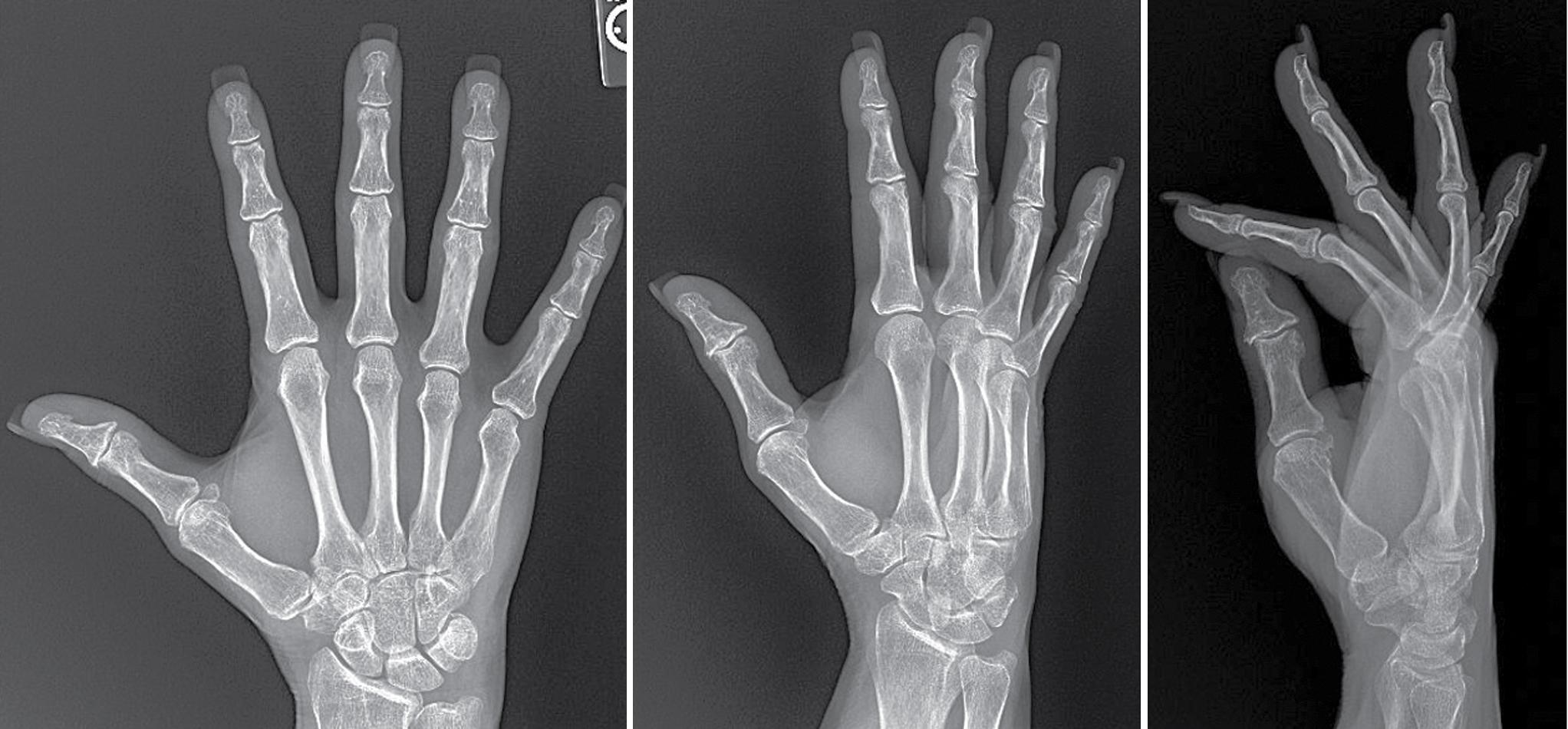
In the lateral view, volar subluxation of the proximal phalanx may indicate an accompanying dorsal capsular tear of the MCP joint. Some subluxation may be physiologic, so comparing it with radiographs of the uninjured side is important. Pathologic subluxation may require additional capsular repair or imbrication at the time of UCL repair.
In chronic injuries, radiographs should be carefully scrutinized for the presence of osteoarthritis of the thumb MCP joint.
Ultrasonography can differentiate between partial and complete injury in most cases, especially in the hands of an experienced ultrasonographer. Furthermore, the position and orientation of the torn ligament can be ascertained in most cases.
Magnetic resonance imaging (MRI) may also be a useful adjunct, but these tests are unnecessary if the clinical examination is conclusive.
Distal branches of the superficial radial nerve often lie in the operative field and are at risk for injury.
The thumb MCP joint is a diarthrodial ginglymoid joint that is movable in all planes but primarily moves in a flexion-extension arc.
The joint is stabilized by both static (volar plate, collateral ligaments) and dynamic (intrinsic and extrinsic muscles) structures.
The UCL is composed of two distinct structures: the proper UCL and the accessory UCL. The proper UCL arises from the lateral condyles of the thumb metacarpal head and travels distally and volarly to insert on the lateral tubercle of the proximal phalanx. The accessory UCL courses superficially from a more volar site on the metacarpal head to the volar plate and sesamoids ( Fig. 17.3 ).
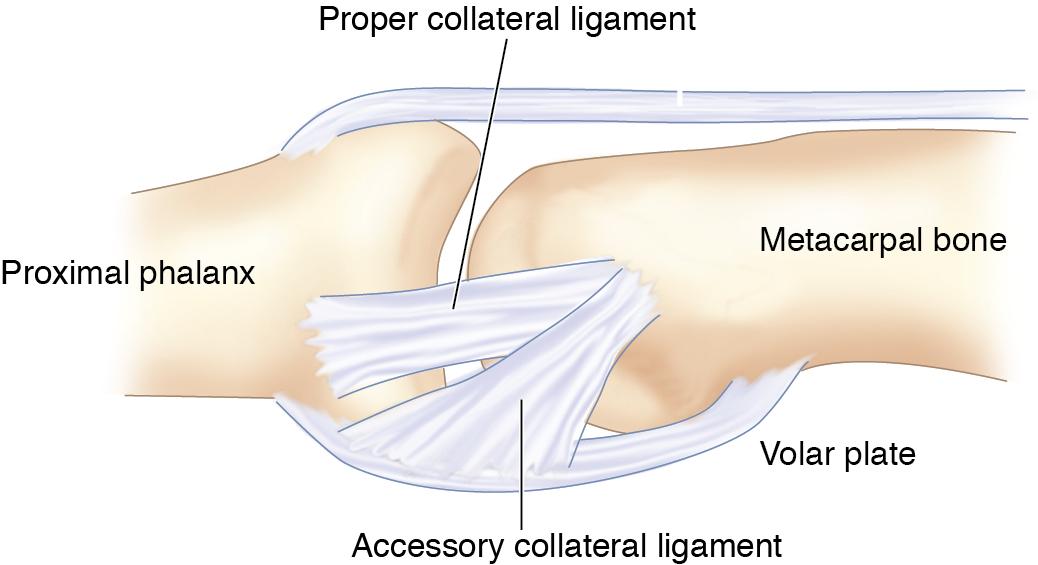
When excessive valgus stress is applied, the UCL usually tears (or avulses) at its distal attachment. If the radial deviation of the proximal phalanx continues, the avulsed UCL displaces further, and the leading edge of the adductor aponeurosis passes over and beyond the torn ligament. As the injured MCP joint reduces, the torn UCL folds back upon itself, and the adductor aponeurosis becomes interposed between the torn inverted ligament and its attachment site on the proximal phalanx. This anatomic occurrence is termed a Stener lesion ( Fig. 17.4 ).
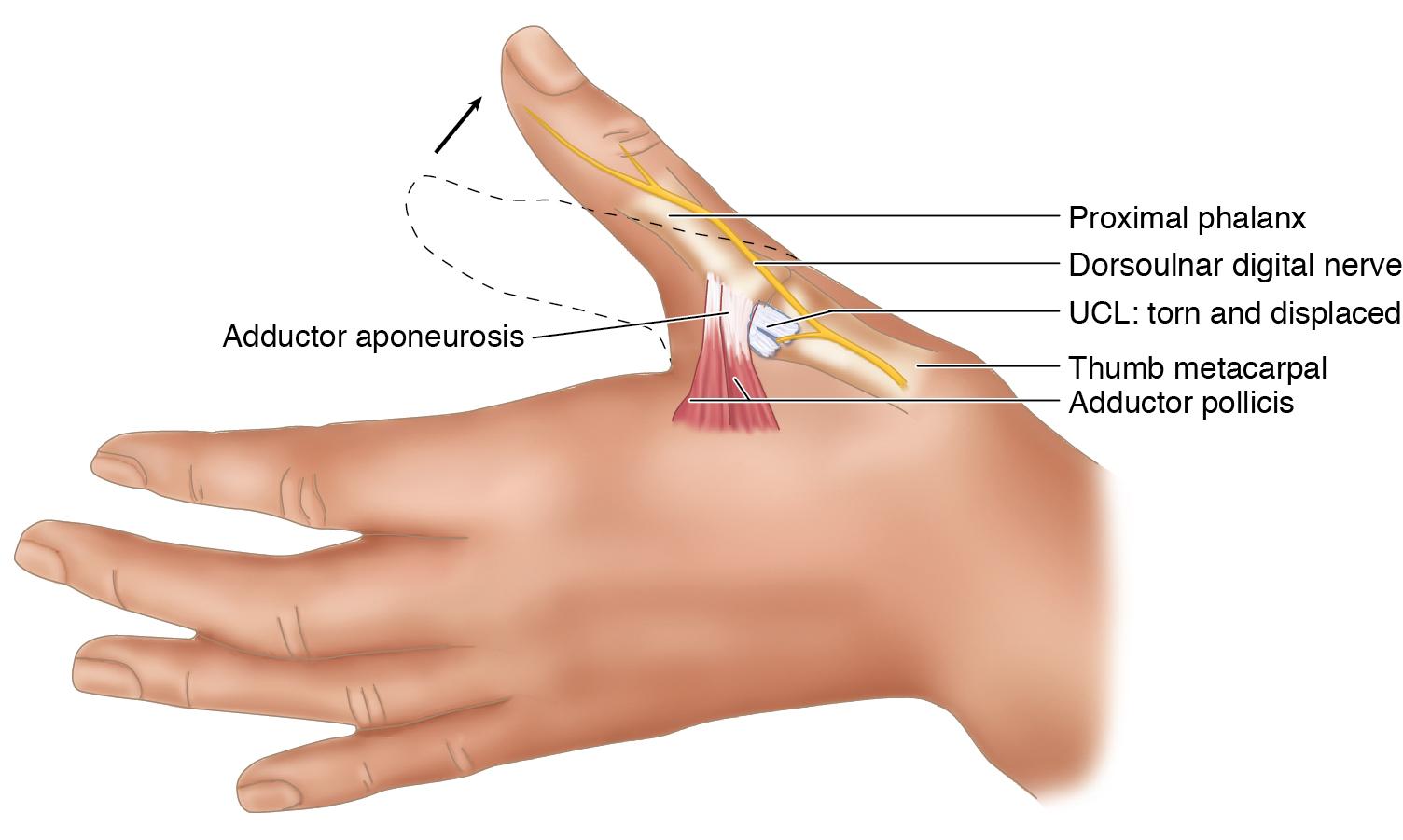
Stener lesions are reported to occur in the majority of complete UCL tears (64%–88%). Because the ligament is displaced from its point of attachment, normal healing cannot occur, even with prolonged immobilization. This is why operative repair is indicated for most, if not all, complete UCL ruptures.
A lazy-S incision is marked on the dorsal-ulnar aspect of the thumb MCP joint ( Fig. 17.5A ). Alternatively, the incision can be hidden within the skin fold when the thumb adducts (see Fig. 17.5B ) The incision curves from volar distally to dorsal proximally, remaining ulnar to the extensor pollicis longus (EPL) tendon.
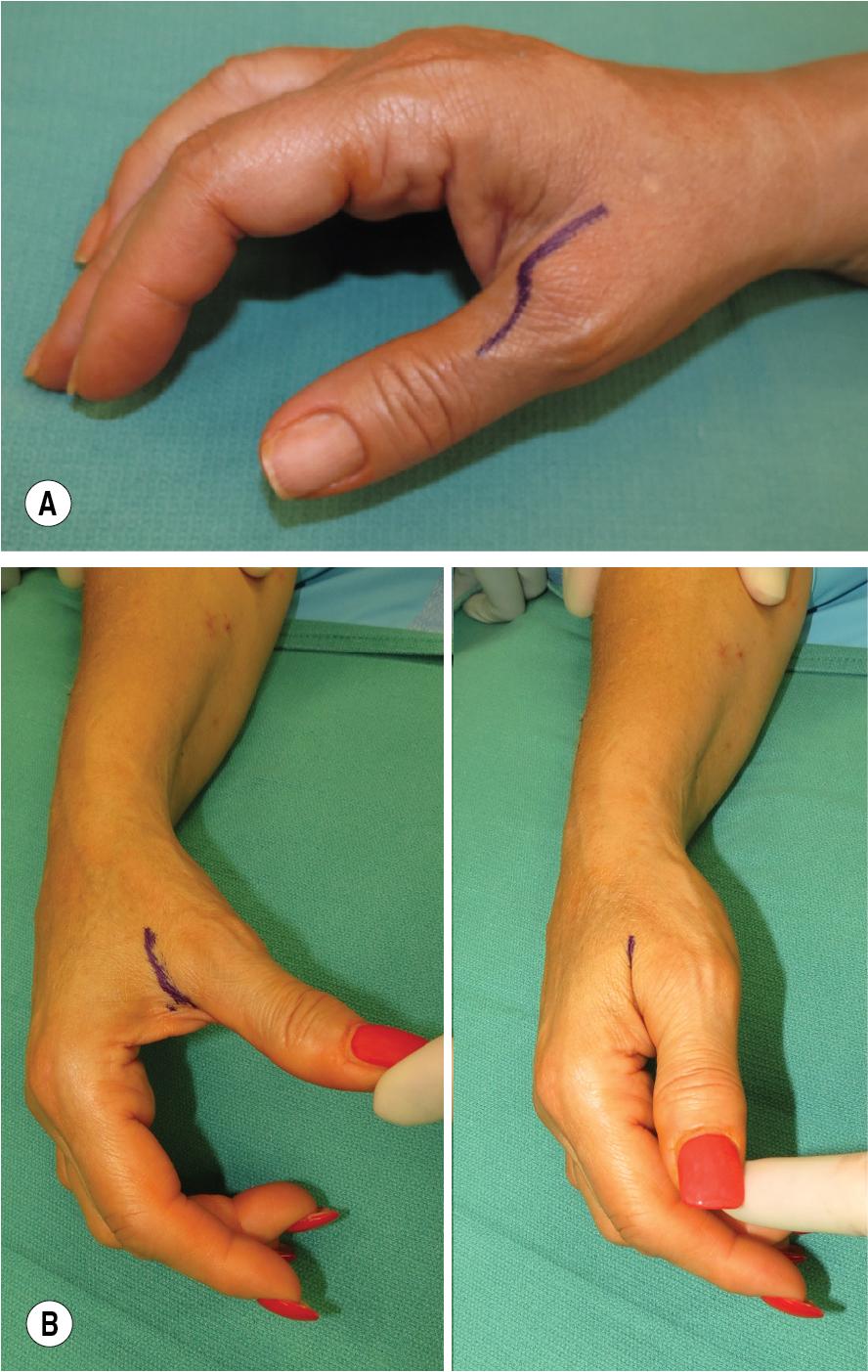
Identify and protect branches of the superficial radial nerve within the subcutaneous layer.
The proximal border of the adductor aponeurosis is exposed.
If there is a Stener lesion, a rounded mass of tissue will appear at the proximal edge of the aponeurosis.
The adductor aponeurosis must be incised longitudinally, ulnar to the EPL, to expose the joint capsule. The joint capsule is then opened longitudinally at the dorsal edge of the collateral ligament, and the soft tissue and bone injury can be exposed and evaluated ( Fig. 17.6 ).
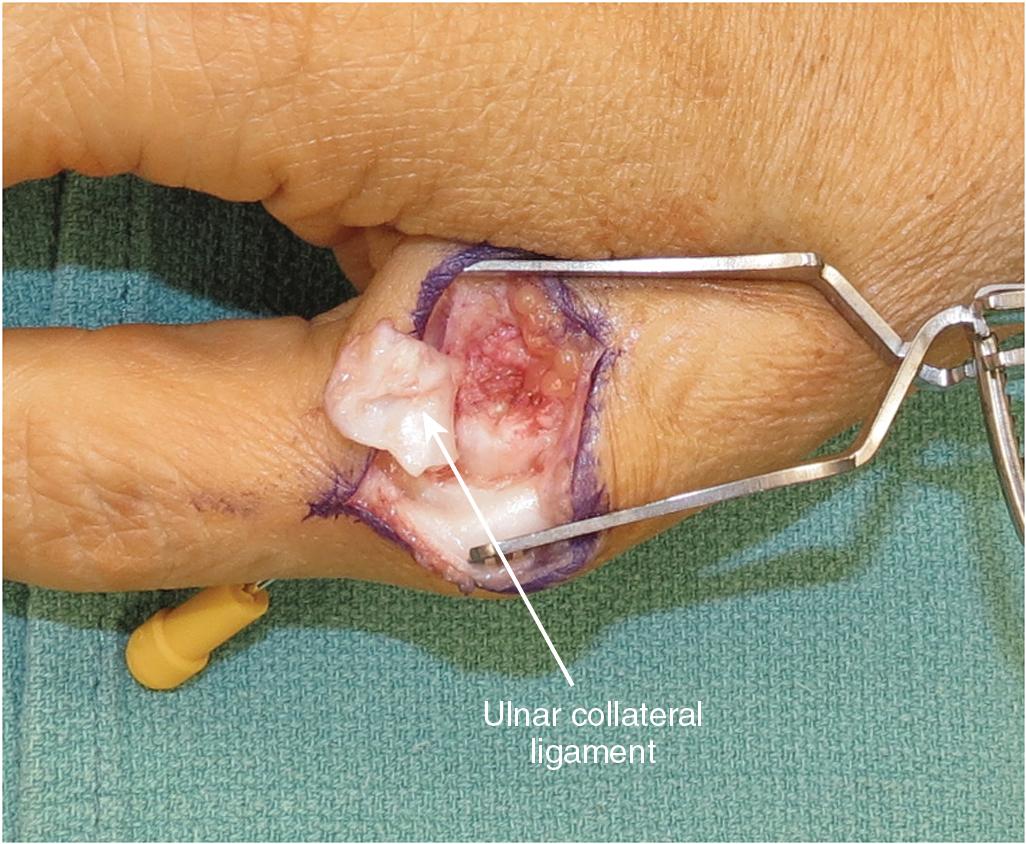
Radially deviate the proximal phalanx and irrigate the joint to gain maximal visualization.
Mark the adductor aponeurosis with a surgical marker before incising it and leave an edge to sew to radially. This makes it easier to identify and repair this structure at the end of the case.
If a tiny avulsion fragment is present, it should be excised to avoid impingement in the joint.
Take time to carefully evaluate this anatomy; one must avoid accidentally detaching the proximal portion of the collateral ligament as the adductor aponeurosis is incised and the joint capsule opened.
Become a Clinical Tree membership for Full access and enjoy Unlimited articles
If you are a member. Log in here